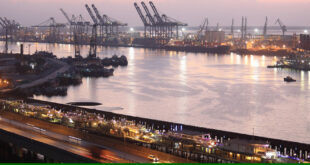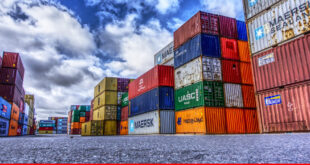Creation of WTO and arriving at the agreement to give all countries equal opportunities ushered a new era in international trade. Simultaneously, different trade groups emerged to ensure collective wellbeing, NAFTA was the first to emerge, that was followed by European Union (EU) and the story continued. From Pakistan’s perspective it is member of ECO and SAARC but both these blocs have remained muted. RCD was broadened and given ECO name but remained of no consequence because of Iran facing economic sanctions for more than three decades. Turkey paid more attention to acquiring membership of EU than reviving ECO. Pakistan was engrossed in Afghan war and its internal conflicts due to the war going on in the backyard. SAARC remained ineffective due to Indian hegemony. Under the prevailing scenario Pakistan had no option but to enter into bilateral preferential trade and free trade agreements. Out of these the most important is Pak-China Free Trade Agreement (FTA).
Let one point be kept in mind that China is the second largest economy of the world that has attracted huge investment from United States and also emerged as one of its main trading partners, as against this Pakistan was often labeled ‘failed state’ with nineties being called ‘lost decade’. Pakistan’s economy has virtually collapsed due to influx of Afghan refugees as of the USSR attack on Afghanistan in late seventies. War going on in Afghanistan for nearly four decades and the country is emerging as the worst victim of terrorism/militancy/extremism.
As foreign investment dried, Pakistan had to look for a friend who could help in strengthening the local infrastructure as well as manufacturing base. China, a time-tested friend extended the support in building infrastructure and power plants. China also tried to revive trade through ‘all season’ KK highway, previously known as ‘Silk Route’, the oldest trade corridor. There was substantial increase in bilateral trade between the two countries even prior to the signing of FTA, which has removed barriers to further smoothen the trade.
Pakistan and China signed FTA in 2006 and its scope was to broaden with the passage of time. Reviewing the ground realities after almost 8 years leaves a strange feeling. Certain groups having vested interest are making Pakistanis scared rather than preparing them for exploiting the opportunities. One needs to look at the discussions going on with a different perspective.
Some quarters are certainly unhappy with the time-tested cordial relationship between the two countries and wish to create hurdles. Be it the growing militancy in Chinese areas adjoining Pakistan or unrest in Balochistan these are not isolated but planned moves to create disturbances in economic cooperation between the two countries. The much talked about hue and cry created by the businessmen having vested interest also needs to be seen in the same perspective.
Since early days, Pakistan and China have enjoyed most cordial relationship. With the passage of time friendship has been further consolidated with China first building the Silk Route, establishing heavy mechanical and electrical complexes in Pakistan. The economic cooperation further consolidated with construction of Gwadar port and two nuclear power plants.
While some cynics term Chinese presence in Pakistan as a security threat, others very strongly believe that economic cooperation between the two countries will usher into new era based on ages old premise ‘Pakistan is a natural trade and energy corridor’. The latest move to achieve this dream is construction of Gwadar to Kashgar road and rail links.
Over the years, China remained a major buyer of textile intermediate goods and lately embarked upon acquiring stake in Pakistani textiles and clothing industry. The move was also seen with great suspicion but very few were able to accept it as part of the strategy followed by the developed countries. With manpower becoming scarce and expensive developed countries shift their labor-intensive manufacturing facilities to developing/least developed countries they continue to enjoy abundant cheap manpower.
It is being alleged that Pakistan has become a dumping ground for cheap and inferior quality Chinese products. This perception gets some credence when one visits Pakistani markets. However, no one can deny the fact that China is known for producing superior quality products which are bought by United States and European countries. Therefore, it may be said that Pakistani importers are deliberately buying cheap goods, which are mostly brought into the country through land route.
The fear that Chinese textiles and clothing industry would cause material injury to Pakistani manufacturers is partly true and partly a myth. Pakistani manufacturers of textiles and clothing compete in the global market with many countries including China. Those manufacturers have been able to compete which go for value addition and produce superior quality products. However, even the most efficient ones face eroding competitiveness because of some structural weaknesses i.e. higher electricity and gas tariffs, prolonged outages, poor law and order situation and above all negative perception about Pakistan.
It goes without saying that whenever two countries sign preferential or free trade agreements in the initial period negative list are prepared comprising of products that are sensitive for both the countries. Therefore, presence of negative lists should not of any surprise for Pakistanis. If Pakistani were not able to identify sensitive products the blame should not go to China.
The beauty of PCFTA agreement is that Pakistan should be buying more of machinery, raw materials and chemicals from China and supplying its goods in which it enjoys comparative advantage i.e. textiles and clothing, sports goods, surgical instruments and seafood (China is the biggest buyer of fish and other species which are not consumed in Pakistan).
China can become the biggest source for textile machinery and Pakistan by converting the entire cotton produced in the country into value added products become a major source of textiles and clothing for China. A fact must be kept in mind that Chinese manufacturers are shifting their manufacturing facilities or establishing manufacturing units in other countries. Pakistan enjoys the competitive advantage and energy shortage will also be overcome with Chinese investment in power plants in Pakistan.
China is the second largest crude oil consuming country after United States. It buys oil from Iran and other countries which is taken by ships through long route. Pakistan has attained self sufficiency in some POL products and output can be further enhanced by operating refineries at optimum capacity utilization. Two pipelines (one for black oil and other for white oil) and mid country refinery, PARCO, can become a major source of POL products for those parts of China which enjoy common border with Pakistan.
Bilateral trade between China and Pakistan is only a fraction of trade between China and India. Exports from India have increased because of supporting policies of the government. As against this Pakistani exporters look for the crutches like textile quota, GSP and cotton at below international prices but are hardly ready to bring efficiency, economy of scale, synergy through BMR/expansion.
In Pakistan many of spinning mills have 14,400 or even lesser spindles, which don’t make economically viable units. Bulk of cloth is produced on power looms and processed in obsolete plants; the result is inferior quality and high cost of production.
Analysis of ginning factories also shows that cotton staple is damaged due to use of outdated/obsolete machinery. The result is that cotton is capable of producing 30 and above counts of yarn ends up in producing coarse counts of yarn, this is waste of resource.
The purpose of mentioning a few examples is that if the country is serious in attracting foreign investors, be it from China or any other country the required steps are: 1) creating enabling environment, 2) encouraging local investment, 3) promoting joint ventures and above all changing the existing negative perception about the country.
It is encouraging that China has shown keen interest in investing in Pakistan. Signing of MoUs may be the first step, but executing the projects is most crucial. The response to the recent IPO of Engro Powergen, enjoying Chinese support is just the tip of iceberg. Chinese investment in infrastructure will certainly help in the creation of enabling environment but Pakistan has to be developed as trade and energy corridor.
 PAGE Blog Business Weekly Magazine
PAGE Blog Business Weekly Magazine

